Beautiful, Complicated, Belgrade

Aaron Saunders, River Cruise Advisor
Monday, July 11, 2016
A shabby little red car pulls up in front of our motorcoach and Milos, our guide, jumps into action.
“See the car on your right, the red one with the short end. That’s the Yugo.” He goes on to describe the car and its infamous reputation for falling apart pretty much anywhere, any time. “What do you call a Yugo at the top of a hill? A miracle.”

Guests aboard Viking River Cruises’ Viking Embla are enjoying a day in Belgrade, Serbia today – a day that started with a complimentary 4.5-hour Panoramic City Tour of Belgrade that includes stops at the Kalemegdan Fortress; the city’s main shopping district in Stari Grad – the Old City; and the permanently-under-construction St. Sava’s Cathedral.
I’ve always wanted to visit Belgrade. My interest in the city – and in a lot of Europe – began when I was a teenager and played a video game called The Last Express, a recreation of the last Orient Express train journey prior to the outbreak of World War I in 1914. Originally shipping on 3 CD-ROMS, you can now download it from the App Store on your iPad and iPhone. How things change in 20 years.

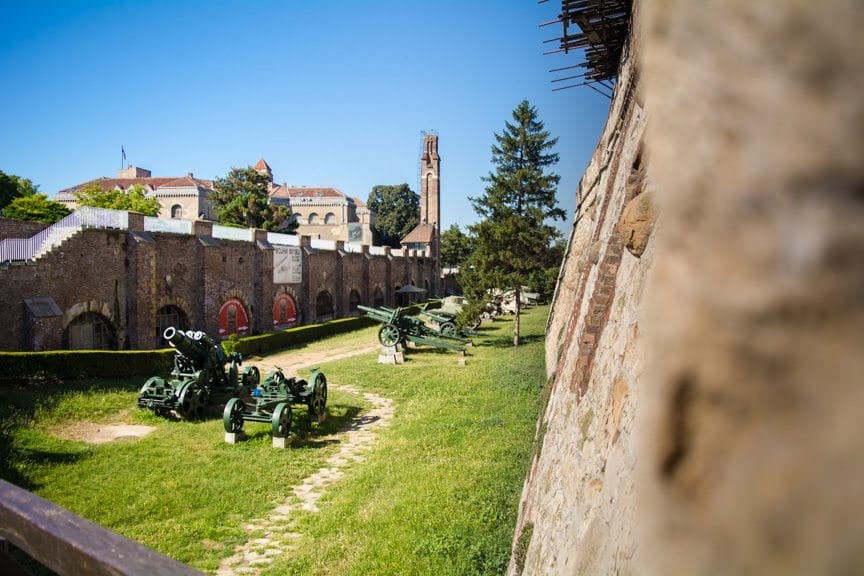
It’s probably not the best reason to want to visit a city, but it did get me interested in Belgrade’s rich history, particularly beginning in and around World War I. And Belgrade – indeed, Serbia – is all about history.
How to summarize the last hundred years of history here? It’s almost an impossible challenge. You’ve got the Balkan Wars of 1912 and 1913, which didn’t really end until 1914 when the Turks came in and put their collective foot down.
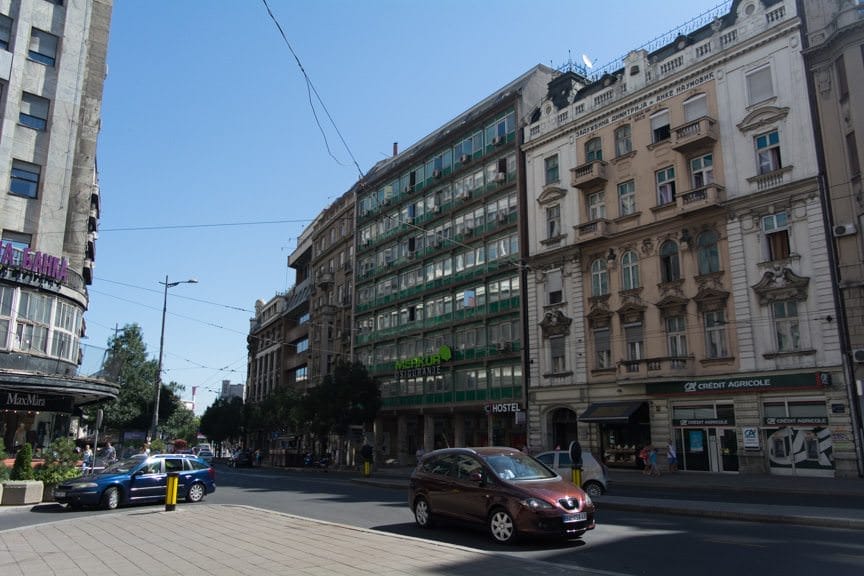
The dust had barely settled on that conflict when Gavrilo Princip – a Bosnian Serb – shot Archduke Franz Ferdinand of Austria in June 1914. Princip was a member of The Black Hand, an underground organization formed by the Army of the Kingdom of Serbia in 1911 with the goal of uniting Serbia at all costs.
Shooting an Archduke, of course, tends to spark wars. By the end of the summer, “The Great War” had begun. When it ended in 1918, the cost for Serbs was high: 1,264,000 Serbian men lost their lives in the conflict. It amounted to 58 percent of the total male pre-war population.

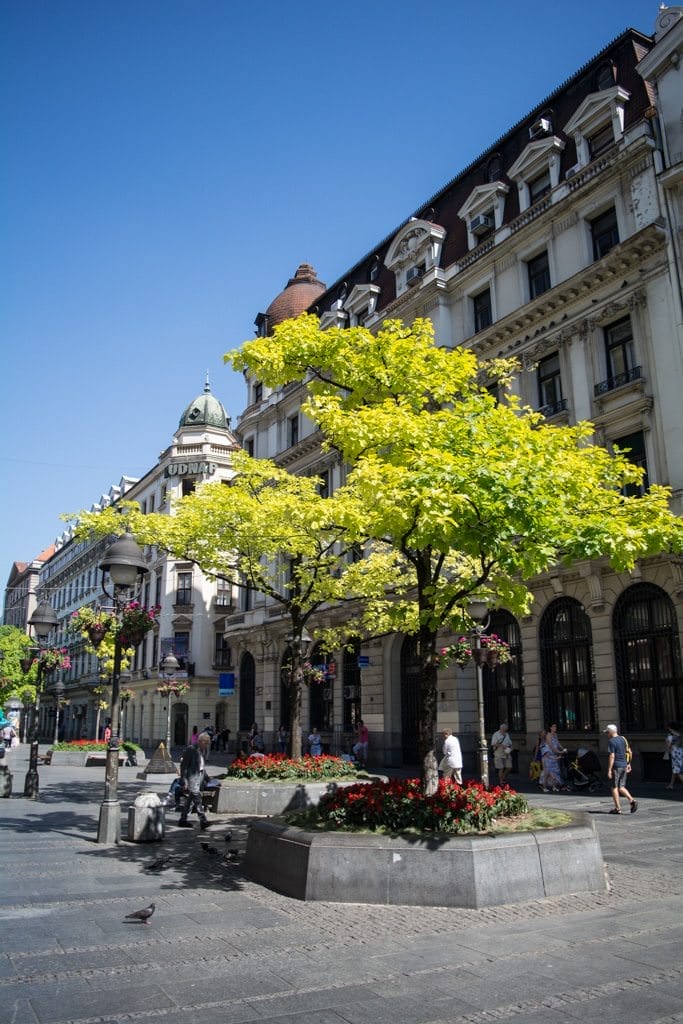

World War II wasn’t any better. Now Yugoslavia, the country was initially neutral before aligning with Hitler and the Nazi Party. The people were outraged, and protests were held on March 27, 1941. Less than two weeks later, the Nazi’s bombed Belgrade back into the stone age, and invaded what was left six days after that. Concentration Camps were established; over 750,000 Serbs, Jews and Romas were liquidated during the course of the war. Apparently, even the Nazis were taken aback by the zeal with which the local authorities went about their task.
Though Yugoslavia rejected Stalin and a Soviet occupation, it did not reject communism. Under the leadership of Josip Tito, Yugoslavia enjoyed relative prosperity (if a restricted one) until his death in 1980. Nine years later, Slobodan Milosevic appeared on the scene. Hyperinflation followed in the early 1990’s, with inflation of 3% per hour, peaking at 600,000% at one point. Things got so bad, the Government printed its own 500 Billion Dinar banknote. Worth $6 USD when it was introduced, its value plunged to $3 USD in the first 24 hours.
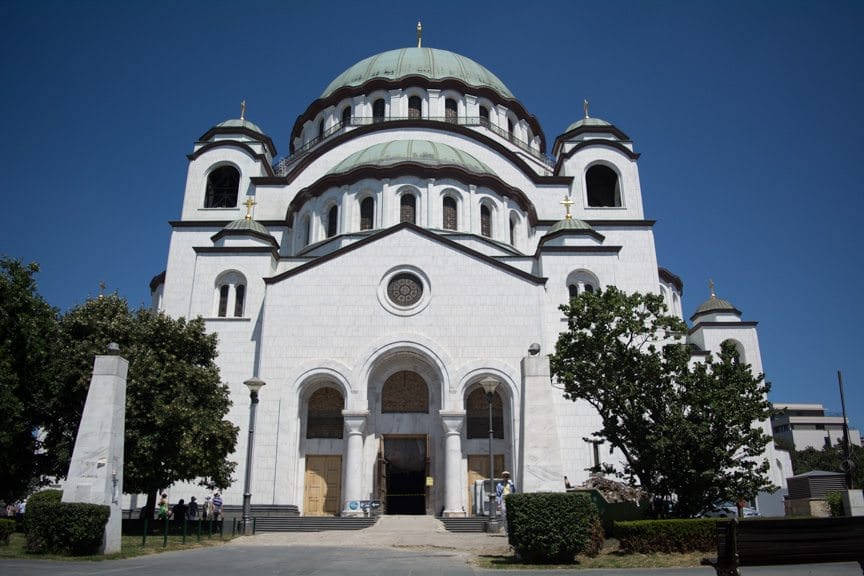
Then, Bosnia came. Then Kosovo. NATO bombed Belgrade in 1999; evidence of which is still visible to this day. Milosevic was arrested in 2000 and tried for war crimes. Yugoslavia changed its name to Serbia in 2003. Milosevic cheated his trial in 2006, when he was found dead in his cell in The Hague.
Our Panoramic City Tour this morning gave us all that history, and more. Our guide Milos was honest and forthright about his country: his love for it; its complicated history; and its deeply-flawed leadership and national psyche.
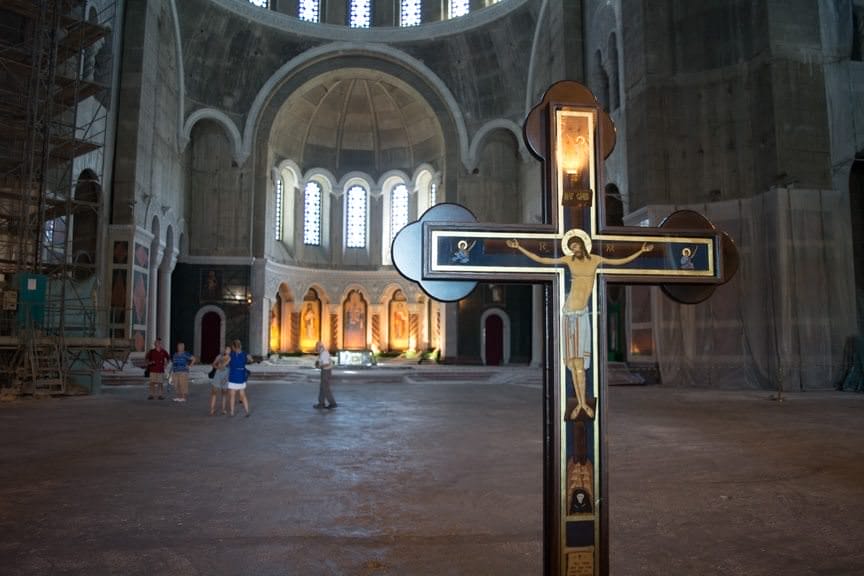
That conflict manifests itself physically on the streets of Belgrade. The hotel where the Orient Express would have put up passengers before the outbreak of World War I still stands, along with an adjacent gift shop. It’s a gorgeous, Victorian-era building that stands next to some decidedly utilitarian communist-era architecture. Across the street, a department store built in the modern style. Local shops sit next to stores like H&M and McDonalds. Book stores (of which there are many) carry local Serbian authors and translated versions of the books of Stephen King.


For me, I loved everything about Belgrade today. I love the contrasts, the contradictions. In one intersections, three different Serbia’s are represented: classic Serbia, communist Serbia and modern Serbia.
This afternoon, I chose to participate in one of two optional, additional-cost tours offered here in Belgrade: a two-hour “Behind the Scenes at the Serbian Opera” excursion that runs for €39 per person.

Located in the Old City (Stari Grad), our guide, Yelena, took us through the National Theatre. It was constructed in 1869 and bombed during World War I. The façade of the building had to be rebuilt, and repairs were completed in 1922. In addition to famous Serbians, it has hosted performers like Luciano Pavarotti and Placido Domingo.
This tour was superb from start-to-finish. We were invited up onto the stage to see the view looking back towards the ornate theatre setting before continuing on to the backstage area where all of the props and sets are kept. Then, upstairs to see where the costumes are created, tailored, completed and even ironed.
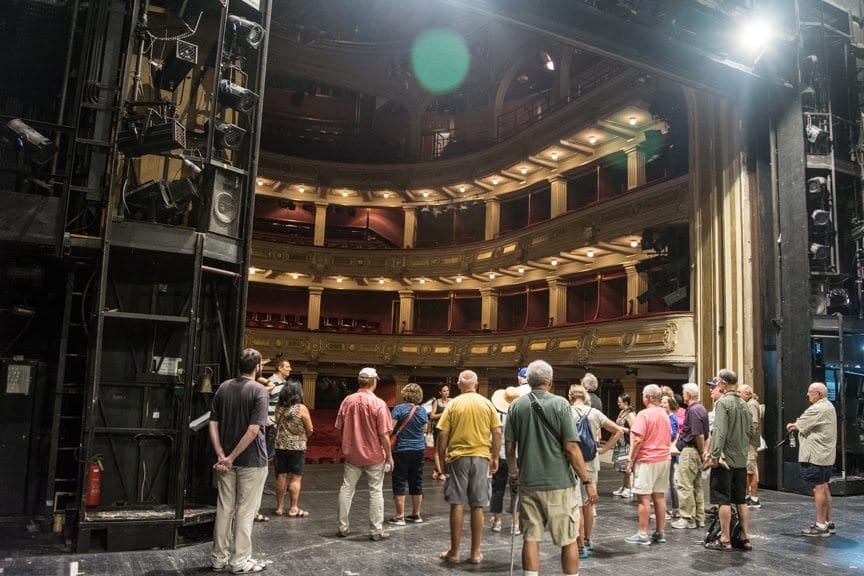
The building smells decidedly of cigarette smoke. There are yellowing “No Smoking” signs spaced about five feet apart in every corridor and room we visited. So it put a smile on my face when a rough-looking old guy (the only male costume maker in a large room of women) lit a cigarette, put it in his mouth, and took a huge puff on it. He exhaled that smoke all over the room, and it wafted past a “No Smoking” sign near his head. It was a beautiful moment that revealed much about the Serbian mentality of old: rules are made to be broken.
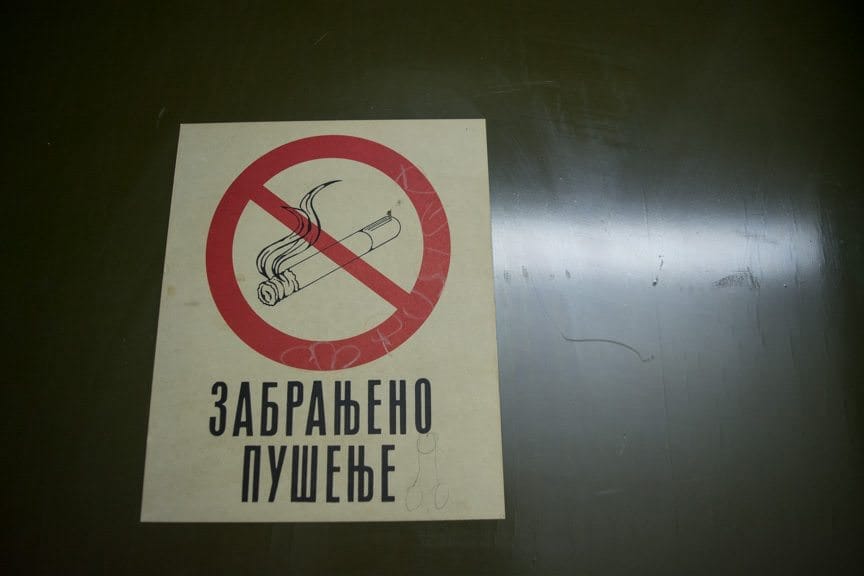

Our tour concluded in the National Theatre’s lower level, where we were treated to sparkling wine and a private operatic performance by two talented young people, Sanja Kosanic and Stevan Karanac. In total, they performed four works for us: Aida’s aria, I act; Alfredo’s Aria, La Traviata; Tosca’s aria; and Su-Chung’ s aria, the Land of Smile.
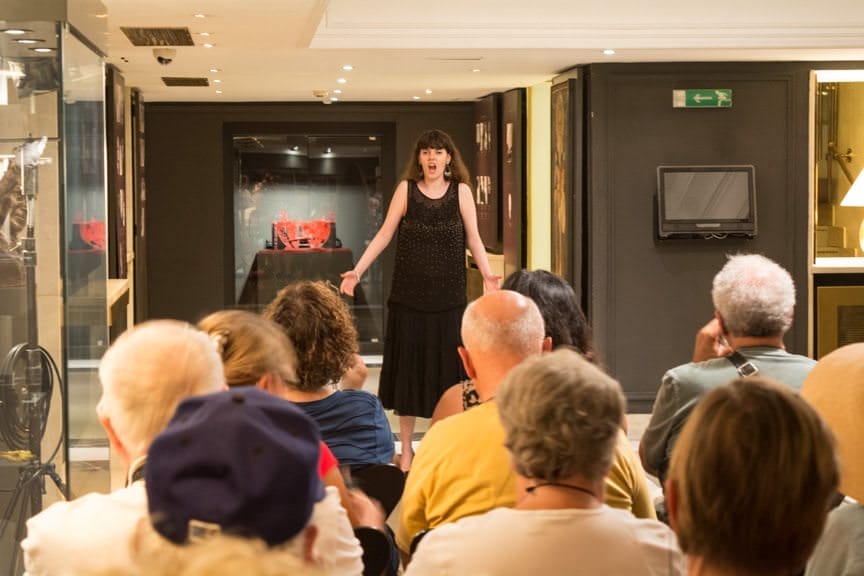
This tour was one of the best optional tours I’ve taken on any river cruise. The cost was very reasonable, our guide and the overall experience were both fantastic, and the timing was perfect. With an intimate group of less than 20, it was an uncrowded, unrushed experience too – just the sort of thing I don’t mind paying a little bit extra for.
Our Serbian experience continued back onboard Viking Embla, with a fabulous lecture on Serbian history by a local guest lecturer, Srdjan, who gave a talk on Serbia past and present in the Viking Lounge. I love that Viking invites local experts on in select ports in order to give guests a better insight into the place they’re visiting; don’t assume that all river cruise lines do this, because they don’t.
Another Viking feature that I love, and was glad to see here: Viking’s famous dinner feast. On Danube runs in Germany, this is a Bavarian feast. Here in Belgrade, Viking is offering up A Taste of the Balkans dinner; a veritable feast featuring the culinary delights of this region, complete with local drinks, local beers, and the local plum brandy known as Sljivovica.


I’d always wanted to come to Belgrade and now, I can’t wait to return. Its history is messy and still being written, but there’s an energy and honesty to the Serbian people that’s very infectious. It’s one that I admire and respect, despite the obvious hardships their country still faces.
However, humour is never far from reach for most Serbians. Milos has one last zinger for us before we get off the coach and return to the Viking Embla.
“Why do all Yugo drivers go to heaven?” he asks. “Because they’ve already been to hell.”
Our Voyage Report from onboard Viking River Cruises’ Viking Embla in Eastern Europe will begin tomorrow from Osijek, Croatia! Be sure to follow along on twitter @deckchairblog or using the hashtag #LiveVoyageReport.
Viking's Passage to Eastern Europe
| Day | Port |
|---|---|
| Day 1 & 2 | Bucharest, Romania |
| Day 3 | Veliko Tarnovo & Arbanassi, Bulgaria |
| Day 4 | Vidin, Bulgaria |
| Day 5 | Cruising the Iron Gates |
| Day 6 | Belgrade, Serbia |
| Day 7 | Vukovar & Osijek, Croatia |
| Day 8 | Kalocsa, Hungary |
| Day 9 | Budapest, Hungary |
| Day 10 | Budapest, Hungary |
| Day 11 | Recapping our Journey |















